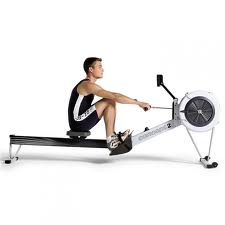How to Add Volume to Your Training
By Erik Castiglione
If some is good, more must be better, right? It’s a common thought trap to fall into, especially when it comes to training. Unfortunately, this isn’t the case. We’ve talked about how we adapt to training and the pitfalls of mixing programs here, but for those who haven’t read, suffice to say that there is a point of diminishing returns. If you pass that point, your progress is likely to stall, and even regress.
So, for people looking for a little additional work outside of regular class, how can we add it in without burning you out? Here are a few ideas:
- Steady State Cardio
Row, bike, ski, jog, hike – any of these cyclical movements, or a combination of them, can be performed for steady state cardio. Rather than varying your heart rate with different movements resulting in peaks and valleys, we want to use these low intensity movements to keep our heart rates between 130-150 bpm, for a MINIMUM of 30 minutes. Why? That’s the minimum effective dose for ventricular hypertrophy. In other words, we’re trying to grow the left ventricle of your heart, which will improve your heart’s ability to pump blood to your body.
There are other benefits to this type of exercise as well: it’s low impact (possibly with the exception of running, depending on your gait), it helps you recover from working out, and improves your body’s ability to recover for future workouts, and it has low neural demand (i.e. it doesn’t fry your nerves, leaving you feel beat).
The downside: it can be boring AF to do this. As CrossFit athletes, we’re accustomed to variety of movement, and short, intense bouts of exercise. Or, if it’s a long WOD, periods of movement, and periods of rest. Many of us joined CrossFit BECAUSE steady state can be boring. That doesn’t mean it lacks value. In fact, this is a big gap in many athletes’ training.
We program it in our class WODs 1-2 times per month. To get the biggest benefit from it, you can include it 1-3 times per week. Start with 30 minutes, and build duration over time, capping it at 90 minutes. If you’re still not convinced, let’s end this session with two additional benefits to including this type of work. One, it will improve your efficiency in rowing, running, or whatever modality you choose. As your form improves, you can go at a faster pace for longer, without elevating your heart rate. Second, it will make you mentally tough. If you’re accustomed to rowing 5000+ meters, 500-1000m repeats in a WOD won’t feel like much. Couple that with your newfound efficiency, and in a particularly hairy WOD, you can use these intervals to bring your heartrate down and catch your breath.
- Unilateral Accessory Work
Split squats, lunges, single arm press variations, etc. – many of us are limited in the amount of weight we can handle with these movements, which makes them ideally suited for high volume work. Additionally, like steady state card, these movements have a relatively low neural demand. While they may make your muscles sore, they won’t fry your system.
There are several uses for these types of movements. First, if we keep them very light, they can be used for recovery work. Using light weights promotes blood flow to the target muscles, which is necessary to get them the nutrients they need to rebuild after a tough training session.
Second, they can help bring up lagging muscle groups, which transfers nicely to bilateral movements. For example, if your glutes and hamstrings are underdeveloped relative to your quads, you may find that your knees shift forward over your toes when you squat. This moves the bar out of position, and further limits your ability to recruit as much musculature as possible. The end result: a lower max lift. By building the glutes and hamstrings with accessory work, we can correct faulty movement patterns, and help you learn to recruit the proper muscles. This is a faster way to boost your max lifts than just doing more and more back squats ad nauseum.
Third, for athletes looking to build muscle mass, unilateral movements are a great way to do so. We mentioned above that they’re excellent for isolating lagging muscle groups. Well, ramp up your time under tension with additional reps/volume, or pauses/tempo work, and you’ll see some great gains in lean body mass.
- Band Work
Band work confers many of the same benefits as unilateral accessory work, with the additional bonus of promoting tendon strength as well. This is due to the elastic nature of bands. Building tendon strength is excellent for injury prevention and resiliency.
So, how do we add unilateral and band work to our program? Pick 1-2 movements per training day. If it’s a squat day, go for additional lower body work, like split squats and band leg curls. For upper body centric days, you can’t go wrong with some additional work on the bi’s and tri’s. Feel the pump, but don’t burn yourself out. And enjoy your gains!



